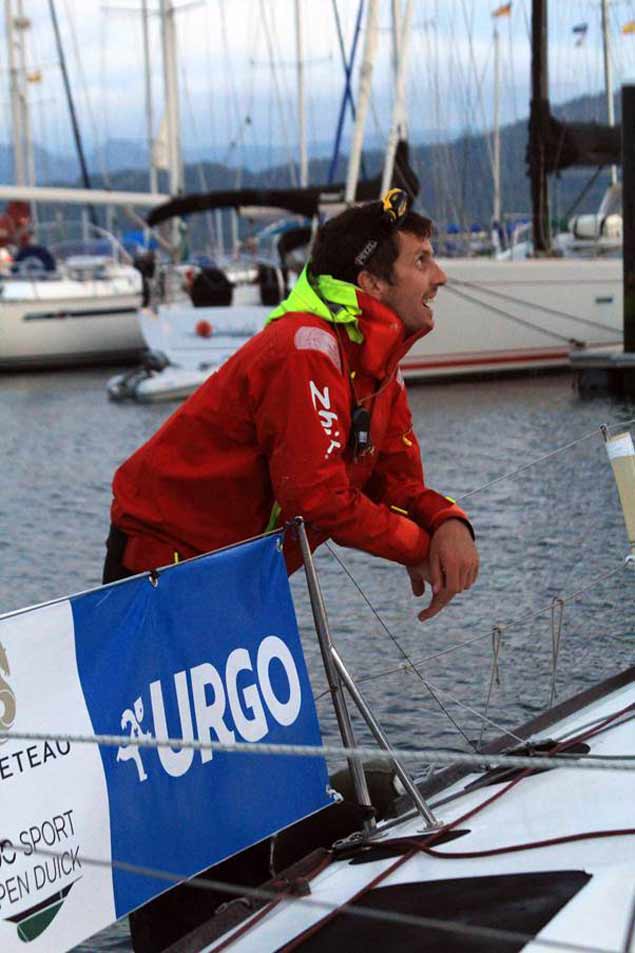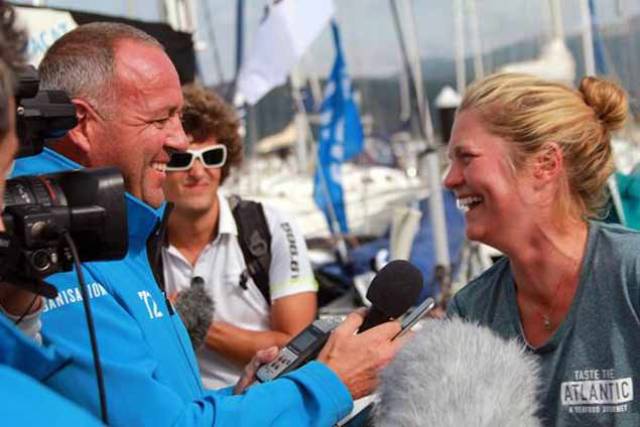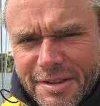#ThisGirlCan has become a rallying cry for Joan Mulloy’s supporters in the Figaro Race writes Alex Blackwell in Galicia. After suffering a failed main halyard just before the start, which could have meant the end of the leg 2 for her A Taste of the Atlantic entry in the highly competitive and gruelling single-handed La Solitaire URGO Le Figaro Race, Joan returned to base, where her team managed to pull a new halyard through the mast in record time. She returned to the start and clawed her way back into the fleet, which had about a three hour lead on her.
The Second Leg of the URGO de Figaro required crossing the notorious Bay of Biscay – some 500 miles of strong tides, choppy seas and shifting winds through busy shipping lanes, from France to Spain. The fleet encountered a north-easterly air flow at about 20-25 knots which made for mostly downwind sailing.
 The Figaro fleet in port Photo: Alex Blackwell
The Figaro fleet in port Photo: Alex Blackwell
Three packs of sailors chose slightly different tactics. The two leaders from France, Sebastien Simon and Eric Peron, steered for A Coruna staying closer to the coast of Northern Spain, most likely hoping for a wind shift that would sling-shot them past the headland. Peron shadowed Sebastien much of the way. A second grouping heading straight for Finisterre experienced a wind shift forcing them to the west. A third grouping pointed yet farther offshore to avoid the fickle nature of winds at Finisterre, once thought to be the end of the earth.
The wind was forecast to die down to very little past Finisterre, with a slow upwind slog expected up the Ria de Muros y Noia in Galicia to Portosin. Maintaining speed as long as possible was the goal for the fleet. As evening closed in, it appeared that most of the racers would be finishing during the night when the substantial Galician fishing fleet was most active. Media representatives from France, Spain, Great Britain and Ireland settled in for a long night as the race marks for the finish were laid and the race village set up.
Near 3 am the tracking app showed that Sebastien Simon was still in the lead and approaching the finish line at the mole off the Real Club Nautico Portosin. Race officials, photographers and journalists raced off to intercept him as he tacked up the Ria to the finish. Simon crossed the line at 3:05:55, 20 minutes ahead of his rivals with an elapsed time of 2d 14h 05m 55s. Xavier Macaire managed to slip in front of Eric Peron for second place. Seconds separated the two in a gripping fight to the end.
 Tom Dolan at the end of stage two Photo: Alex Blackwell
Tom Dolan at the end of stage two Photo: Alex Blackwell
Meanwhile, Tom Dolan, the veteran Irishman in the race aboard Smurfit Kappa, played a consistent hand for much of the way. He finished as dawn was breaking in 25th place, with an elapsed time of 2d 17h 25m 10s. He had run out of water at some point, having consumed four litres shortly after the start of the leg, and was parched. All he asked for was water. A fellow competitor noted that that was the first time he had heard Tom ask for water after a race.
 Joan Mulloy finishes leg two in light winds Photo: Alex Blackwell
Joan Mulloy finishes leg two in light winds Photo: Alex Blackwell
Joan Mulloy’s Taste the Atlantic – A Seafood Journey finished at 9:53 in the morning in sunshine and gusty but light conditions. Her elapsed time was 2d 20h 53m 22s. Though exhausted, her grin said it all and she complied with media requests for interviews with a smile and plenty of insight. Asked what it felt like out there, Joan responded without hesitation, “I learned a lot in this race, mostly I learned a lot about myself.” She mentioned that dealing with the fickle conditions and lumpy seas was most challenging. She’d look at the weather forecast, see light air coming, have a bit to eat, then set the spinnaker, only to have the forecast change and she’d have to start all over again.
Joan has become quite the ambassador for BIM and Irish Seafood, a good proportion of which is exported to France. There was a good deal of media interest in her on the docks – particularly after her difficulties at the start. She has also become a major role model for young Irish women who sail and can see themselves in her shoes, plying the seas with the boys from France and Great Britain. #FirstIrishWoman. #Today’sGranuaille. Good natured, skilled, and well spoken, she’s an exceptional ambassador for Ireland overall.
If you want to follow our Irish racers, you can view the race tracker here. The race app, that can be downloaded from Apple and Google Play for Android, is totally addictive. It updates automatically every five minutes if left open. It’s like being out there with them in the cockpit making the calls. But it’s much drier.































































